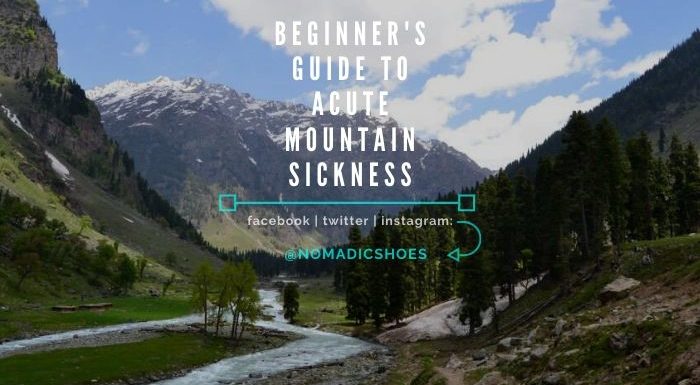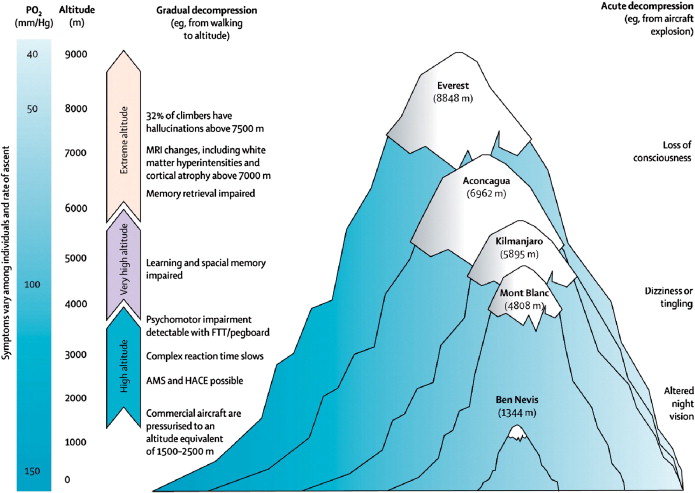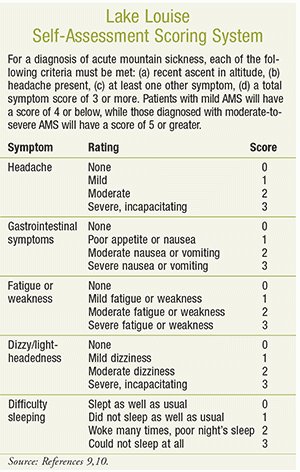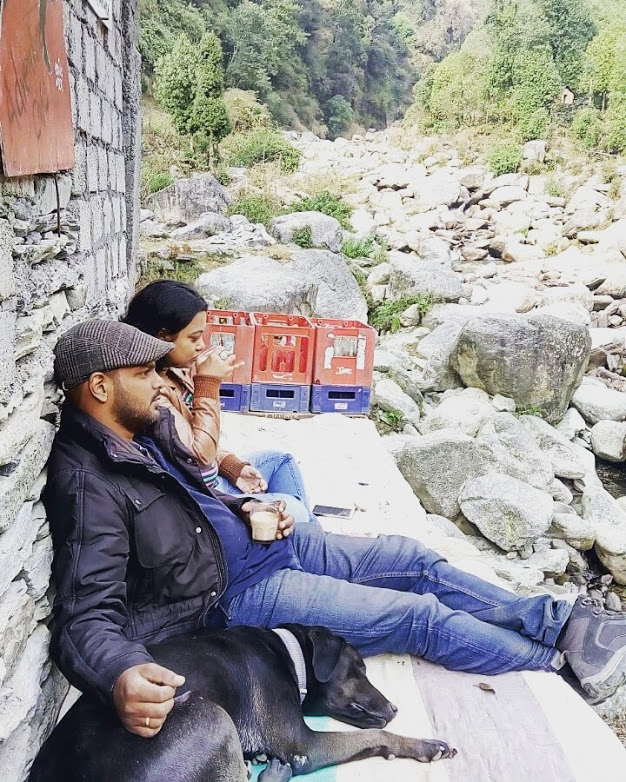
‘The mountains are calling and I must go’ said John Muir. And, the whole generation of travellers scurried towards the mighty Himalayas. In a frenzy to conquer the summit and see everything hidden in the crevices of the Mountain, people forgot to prepare themselves for the long ride. Acute Mountain Sickness is one of the major concern for people travelling to higher altitude destinations.
When I started travelling, I went to Ladakh for my first solo trip. Those days, I was unaware of what Acute Mountain Sickness [AMS] is. I suffered from a few symptoms but didn’t know why I was feeling sick. It was only after a few years, when people started talking AMS that I correlated my condition in Ladakh to Altitude sickness.
So, I am writing this post to educate others about Acute Mountain Sickness. Prevention is always better than cure, having the right information will help you in avoiding AMS to some extent.
What is Acute Mountain Sickness?
Acute Mountain Sickness is due to sudden ascent to higher altitude areas usually after 8,000 ft or more due to lack of oxygen levels and air pressure. Gaining rapid elevation without acclimatising decreases oxygen molecules per breath and the fluids in the body build up in the lungs and brain.

Who is at risk of AMS?
Individuals with heart, lungs and nervous system problems are susceptible to AMS. When you climb rapidly and do not give your body time to adjust to higher altitudes, you may suffer from Altitude Sickness. In some cases, substance abuse [alcohol/drugs] may interfere with acclimatising.
There is no definitive factor as to who will get affected by Acute Mountain Sickness. Any gender, age or fitness level can be at risk of getting AMS.

What are the symptoms of AMS?
- Insomnia
- Nausea
- Fatigue
- Indigestion
- Shortness of breath
- Vomiting
- Constipation
- Headaches
- Dizziness
- Loss of coordination
- Loss of appetite
- Confusion
- Swelling of hands and feet
- diarrhea
- Irritability
- Fever
- Dry Cough
How long does the symptoms last?
The symptoms may start showing within four hours and may last up to four days. The symptoms of Altitude Sickness will subside when you come down to lower altitudes. In most cases, the symptoms are not visible for some time and may suddenly cause discomfort. The first basic visible symptom is a headache and indigestion.
How do I know I have Acute Mountain Sickness?
The Lake Louise Self Assessment Scoring System is used to diagnose Acute Mountain Sickness. A score of four or more is a diagnostic criteria for AMS.

How to prevent Acute Mountain Sickness?
1. Acclimatize:
Take time to acclimatise to high altitude areas. I know of many cases where people fly to higher altitude areas and immediately start exploring. Many of my friends flew to Leh and suffered from AMS as they exerted themselves on the same day by not resting.
2. Hydrate:
Your body loses water rapidly at higher altitude because of hurried respiration. Due to lack of humidity and the harsh Sun the water evaporates quickly from your body. Medical practitioners suggest that you drink a total of 4-5 litres of water in a day in an interval of 20-30 minutes.
3. Rest:
Rest is very important when you are going to going to higher altitude areas. You body needs time to get adjusted with the changing altitude. Travelling is not a competition, you don’t have to see everything in one day, just take the first day as your rest day. Don’t push your body if you feel tired, exerting will only make things worse for you.

4. Avoid Substance Abuse:
It is advisable that you don’t smoke, drink or consume any kind of recreational drugs. Alcohol specially dehydrates your body which can trigger signs of AMS. If you can’t stop yourself from drinking then wait for at least a day before you go binge drinking. Doctors also advise against taking sleeping pills at higher altitudes.
5. High carbohydrate diet:
70% of your diet should consist of carbs on the mountains. You need more calories and eating a carb based diet helps you in regaining your energy. Also, remember that even when you don’t feel hungry, you got to eat to maintain the equilibrium in your body.

6. Medication:
Take acetazolamide [Diamox] two days before you go to the high altitude area. But it is advisable that you see a doctor before starting any course of medicine because the dose required for each individual can vary. Drinking ORS water also helps in keeping the water levels in your body in check.
7. Home Remedies for Acute Mountain Sickness:
I have seen people drinking garlic infused water and smelling pieces of camphor to avoid AMS. Using peppermint essential oil on the forehead helps in calming headaches, rubbing a few drops of lemon oil on your neck combats nausea and lavender oil helps in better sleep. Some people say chewing ginger and cloves helps too in combating AMS.
My encounter with Altitude Sickness
Testing my limits
The mountains at the distance were sky piercing as we drove towards Dhankar from Tabo [Elevation 10,760 ft] in Spiti. Crossing multiple streams and mist covered peaks we zigzagged through the numbing chill. Like an excited kid in a candy store, I wanted to see it all and not miss out on an experience. As soon as we reached Dhankar [Elevation 12,744 ft], we started trekking for the Dhankar Lake. Taking up the challenge of who will reach first, I almost sprinted towards the lake. Upon reaching we were blessed with sites of dove-white mountains that surrounded the glimmering lake. After spending an hour or so, we started back for our next destination, which was Kaza [Elevation 12,500 ft].

Checked into the hotel in Kaza and drove to see Key Monastery [Elevation 13,668 ft]. Now you see the elevation level of all these places, AMS was unavoidable. I already had a mild headache in Tabo which I knowingly ignored and didn’t take rest before starting for the next destination. By the time, we returned to Kaza for our night stay, I was almost unconscious, vomitted a few times, had difficulty in breathing and a throbbing headache which refused to go even after taking medicine.
Sudden episode of AMS
It was in Arunachal Pradesh that I had one of the worst days of travelling in my life. We started from Dirang towards Tawang in a shared cab. I was sitting on the back seat enjoying the beautiful roads but little did I know that the seat was broken. Now people who have visited Arunachal Pradesh will know the condition of the roads there. So 10 hours of journey gave me a severe headache. I felt like puking, had a temperature, couldn’t stop shivering, indigestion, couldn’t sleep and by the time we reached Tawang, I thought I will die. Luckily I was accompanied on this trip by Smita Singh and Sameeraa Shetty who took me to the Army hospital in Tawang and cared for me for two whole days before I got my energy back.

Travelling to the mountains so often gave me a false sense of confidence and I never thought I can be affected by Acute Mountain Sickness. What happened that day was a clear case of AMS. The army doctor informed me and gave me medication and I felt better the next day but it taught me never to take the mountains so lightly.
You might also want to read more about Arunachal Pradesh:
Top 8 Places to Visit in Arunachal Pradesh
The Ultimate Guide to Yazali Nyokum Yullo Festival
There are no sure shot factors as to what leads to AMS and who will get affected, but if you are aware of the symptoms then timely intervention can save your life. Do not take the symptoms lightly, it better to take a step back than risking your life.











Informative blog article. However I had heard that carrying alcohol in high altitudes would help you reduce high altitude sickness. Also, in Sikkim when we went to travel to Changu Lake everybody carried roasted corn and ginger. It does help with the sickness.